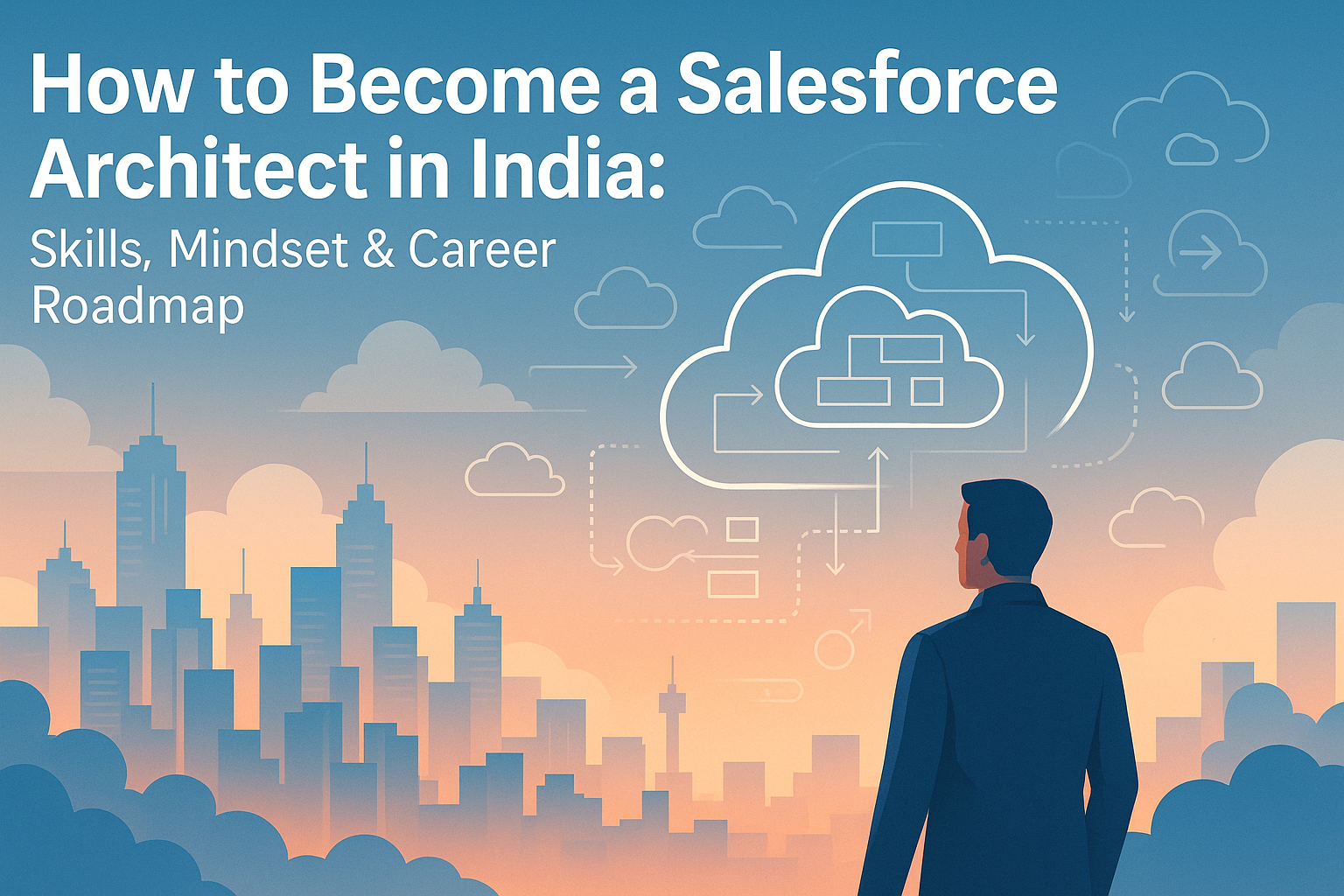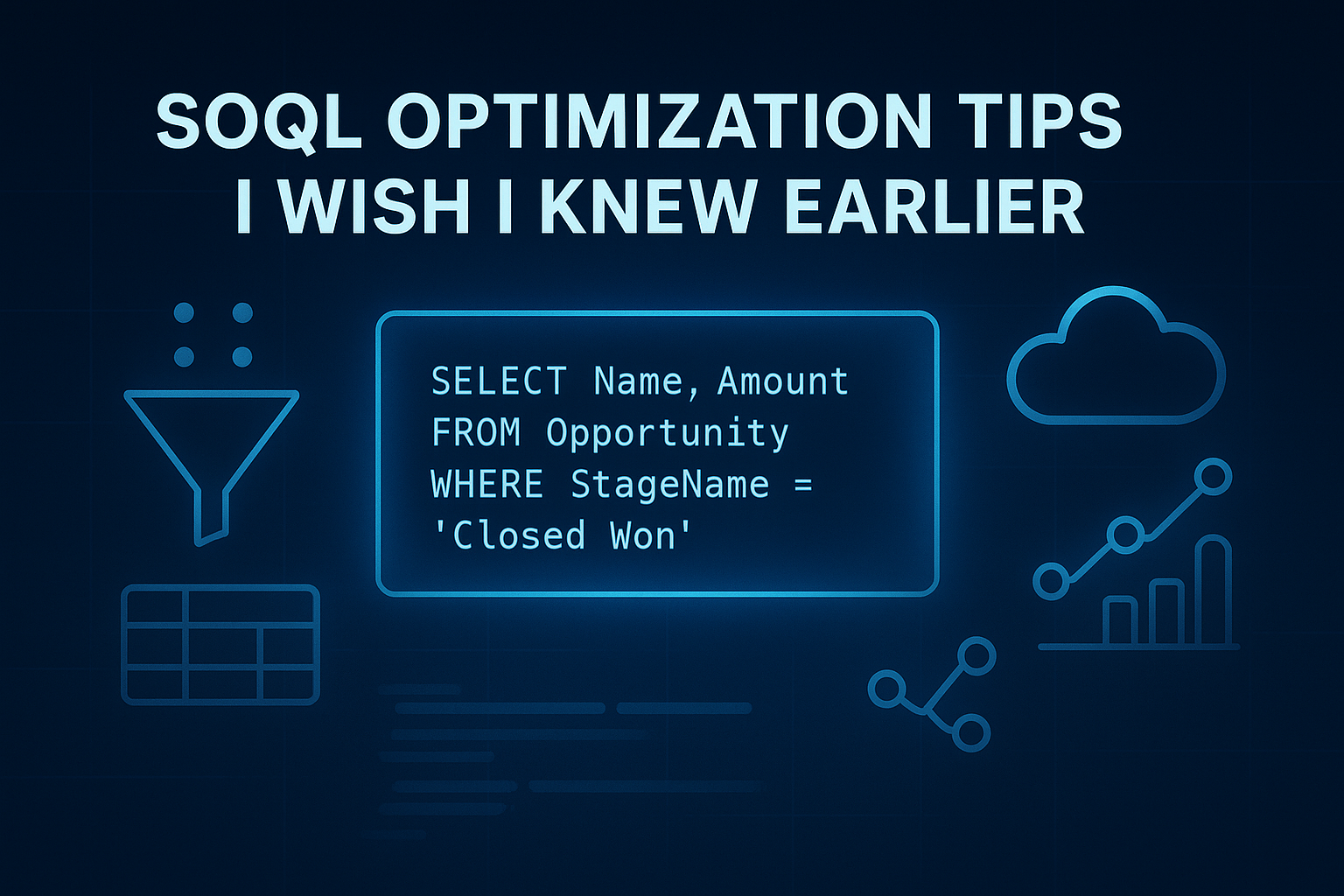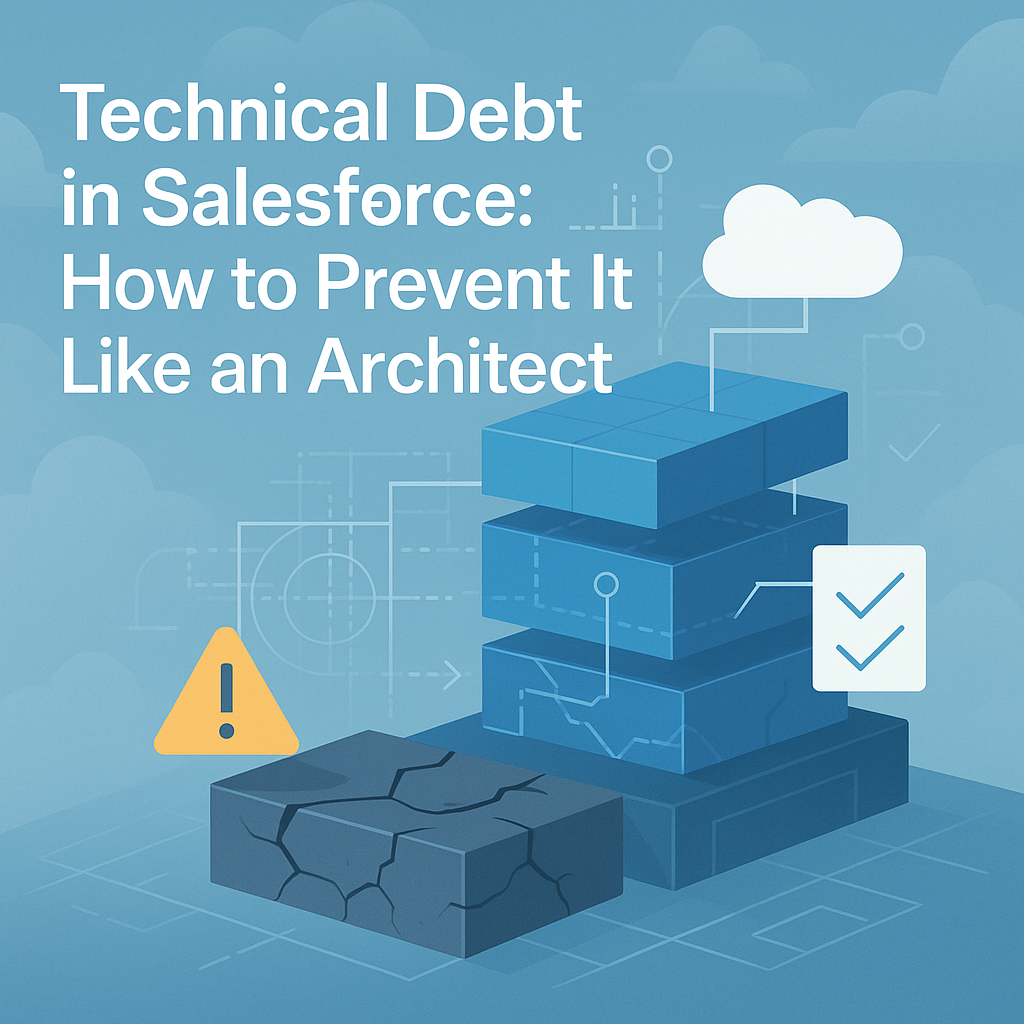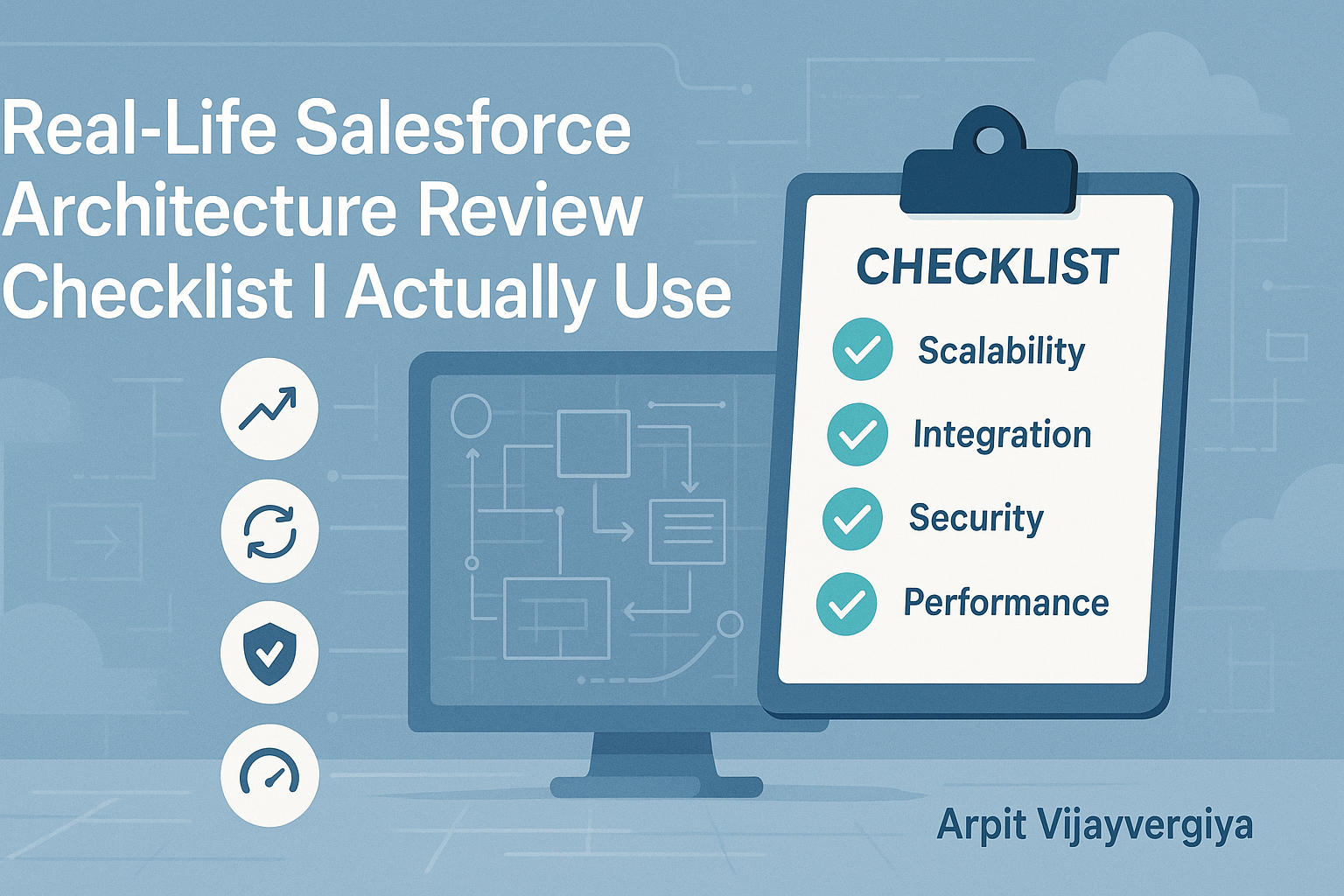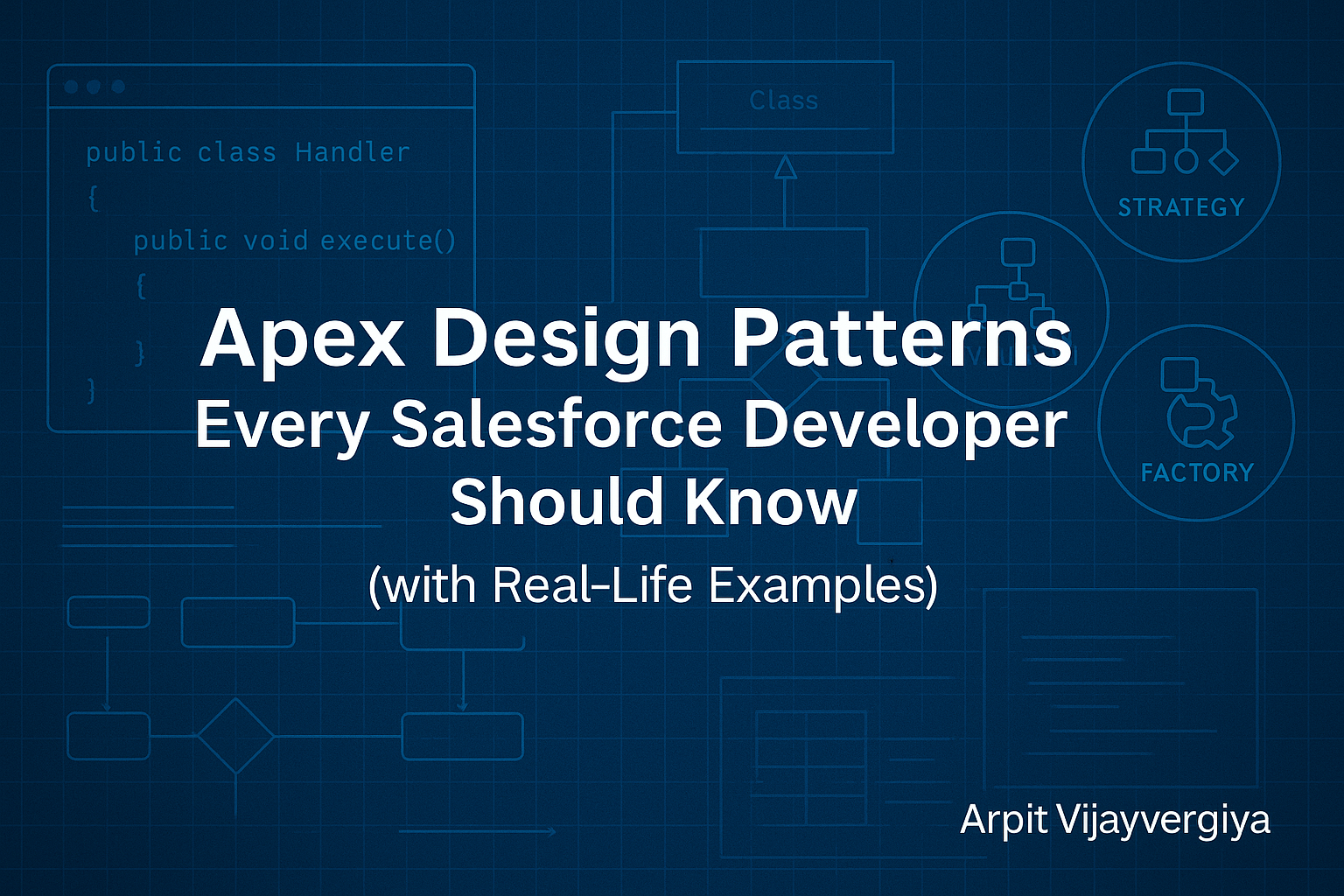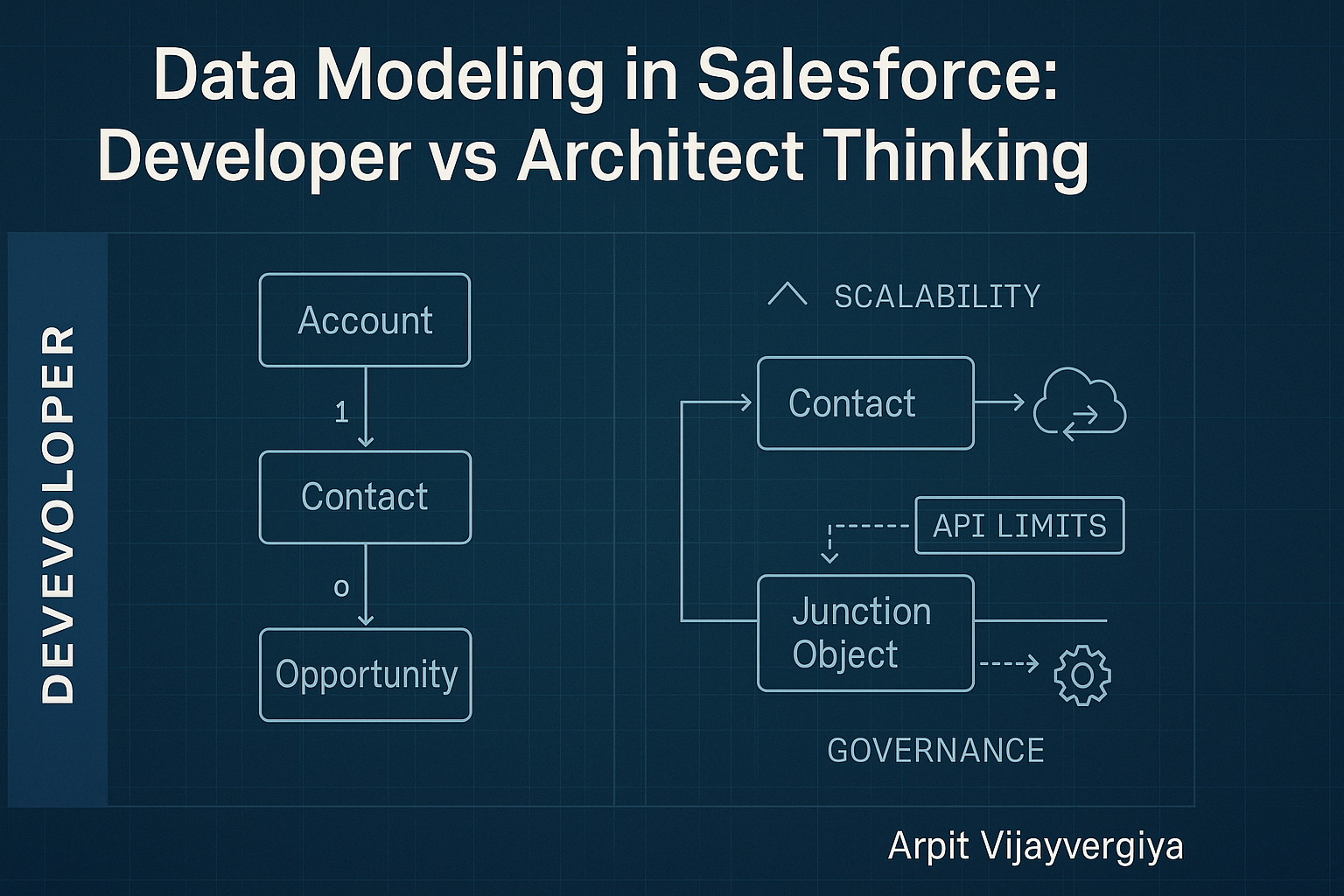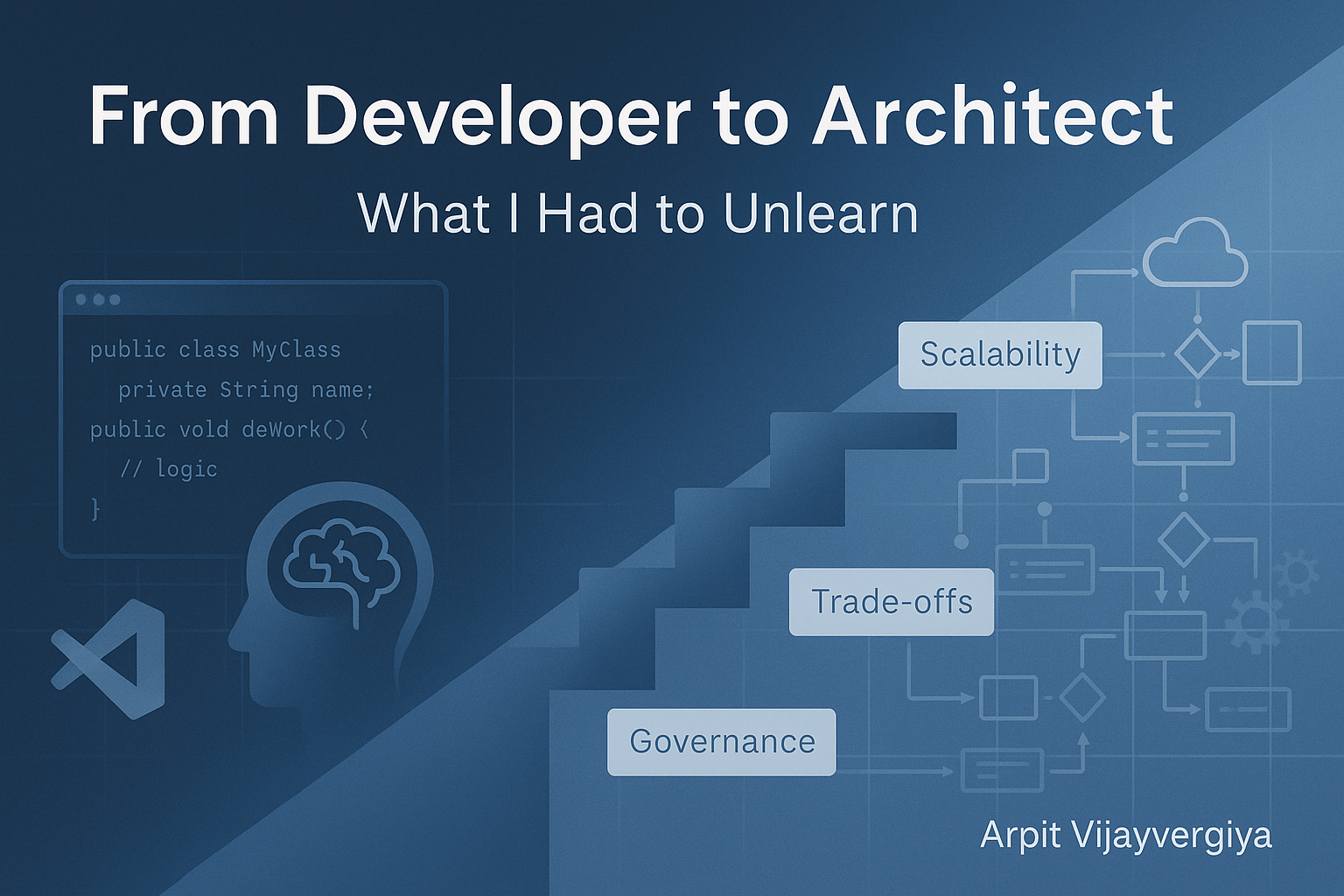If you’re working in the Salesforce ecosystem in India — as a developer, admin, or consultant — and dreaming of stepping into the Salesforce Architect role, you’re not alone.
How to become a Salesforce Architect
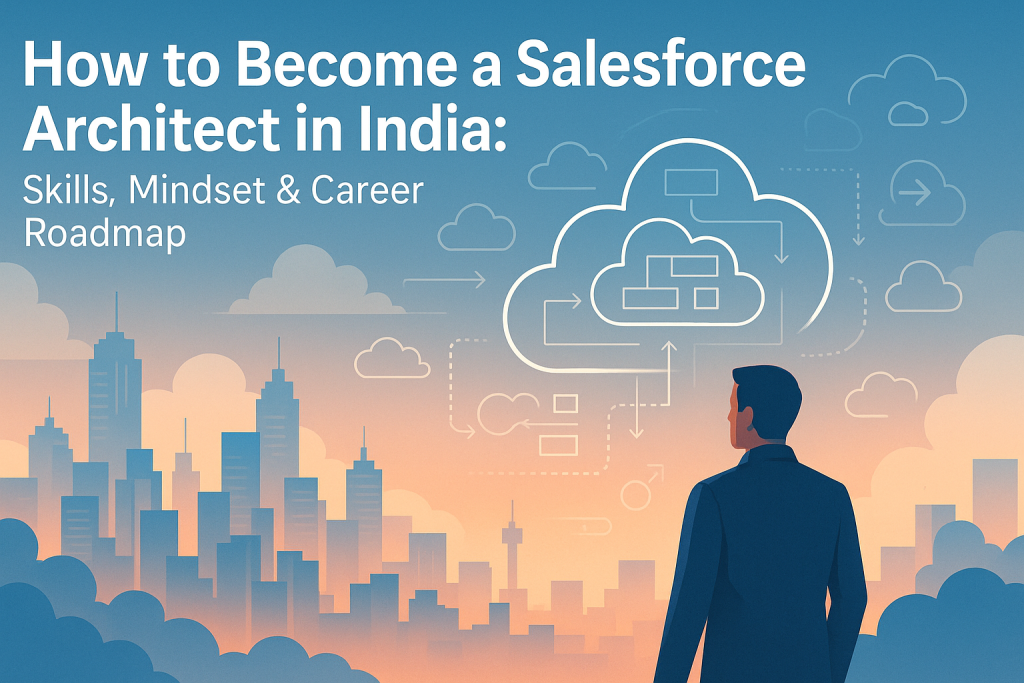
I get this question all the time:
“Arpit, what does it actually take to become a Salesforce Architect in India?”
Well, this post is my honest answer — no fluff, no theory — just what I’ve seen work over the past 10+ years in the industry.
Whether you’re just starting out or already a few years in, here’s a step-by-step roadmap to help you get there, with the right skills, mindset, and milestones.
First Things First — What Does a Salesforce Architect Really Do?
Let’s clear this up.
A Salesforce Architect isn’t just a senior dev with more certifications. Architects are the strategic brain behind Salesforce implementations.
They:
- Design scalable solutions that serve the business long-term
- Solve complex data and integration challenges
- Align Salesforce with other enterprise systems
- Guide developers, consultants, and business users toward the right solutions
There are several types:
- Solution Architect – Thinks cross-cloud, customer-centric
- Technical Architect – Deeply into code, integration, and performance
- Enterprise Architect – Sees Salesforce as one piece in the full IT ecosystem
- Industry Architect – Specialises in domains like automotive, finance, and healthcare
Skills You Absolutely Need to Build
Let’s break this down into technical and architectural layers.
🔧 Core Technical Skills (Don’t Skip These!)
- Data modeling, security, and sharing rules (get this 100% right!)
- Apex, SOQL, Lightning Web Components
- Salesforce Flows: Know when they’re better than code
- Integration patterns: REST, Platform Events, Named Credentials
- Understanding governor limits and system performance
🛠️ Tip: As an architect, you may not code daily — but you should be able to review and challenge any technical decision confidently.
Architectural Thinking (This Is the Real Game-Changer)
- Think in trade-offs: scalability vs speed, reuse vs customization
- Know when to build, when to buy, and when to say no
- Design with future growth, upgrades, and governance in mind
- Create reusable components, frameworks, and patterns
Career Milestones: Your Personal Salesforce Architect Roadmap
Here’s what a realistic growth journey looks like in the Indian market:
| Experience | Role | Focus Area |
|---|---|---|
| 0–2 yrs | Salesforce Developer | Learn platform fundamentals — Apex, Flows, Config |
| 2–4 yrs | Sr. Developer / Consultant | Start owning modules, explore integrations |
| 4–6 yrs | Tech Lead / Sr. Consultant | Design end-to-end solutions, lead teams |
| 6–8 yrs | Pre-Architect Role | Own architectural decisions for small projects |
| 8+ yrs | Solution / Technical/ Domain Architect | Handle enterprise programs, lead governance, mentor others |
📌 Real Talk: Titles may vary — what matters is the impact you’re delivering.
Which Salesforce Certifications Actually Matter?
Certifications can guide your learning, but don’t let them become a checklist.
✅ Start with:
- Platform Developer I & II
- Data Architecture & Management
- Integration Architecture Designer
- Sharing & Visibility Designer
🏆 Then aim for:
- Application Architect and System Architect milestones
- B2B Solution Architect, Omnistudio Consultant (especially for Industry Clouds)
- Certified Technical Architect (CTA) — the Everest of Salesforce roles
🎯 Focus on applying what you learn. Certs mean little without real-world experience behind them.
Don’t Ignore Business & Soft Skills
Being an architect means speaking two languages: Tech + Business.
You should be able to:
- Explain your design to a non-technical CEO or product head
- Translate business goals into Salesforce solutions
- Mentor devs and consultants — without micromanaging
- Write high-quality design docs, architecture decks, and strategy slides
💬 The better you communicate, the more influence you have.
Unique Challenges in India — And How to Beat Them
| Problem | Solution |
|---|---|
| Not enough architecture-level mentorship | Shadow senior architects, join global Slack groups, follow CTAs |
| Budget constraints in projects | Design smart, reusable, low-maintenance solutions |
| Heavy focus on coding | Balance it with platform-first, configuration-led thinking |
| Limited architectural exposure | Take ownership in your current projects — think like an architect, even if you’re not one yet |
So, Where Do You Start?
Here’s my recommendation:
- Pick one real project you’re working on right now
- Start asking architectural questions:
- How scalable is this?
- What happens at 10x user load?
- Is this reusable in other departments?
- Can this be done with config instead of code?
- Document your thought process
- Seek feedback from a senior architect
And most importantly — be patient with your journey. This is a marathon, not a sprint.
Final Words
Becoming a Salesforce Architect in India is 100% achievable — but it takes intentional growth.
- Learn beyond your job description
- Start thinking beyond today’s requirements
- Build credibility through delivery
- Lead, even before you’re given the title
If you’re ready to do the hard thinking, keep learning, and lead with empathy and expertise — this journey will reward you, big time.
How to become Salesforce Architect
Salesforce Architect in India
Salesforce career path
Salesforce certification roadmap
